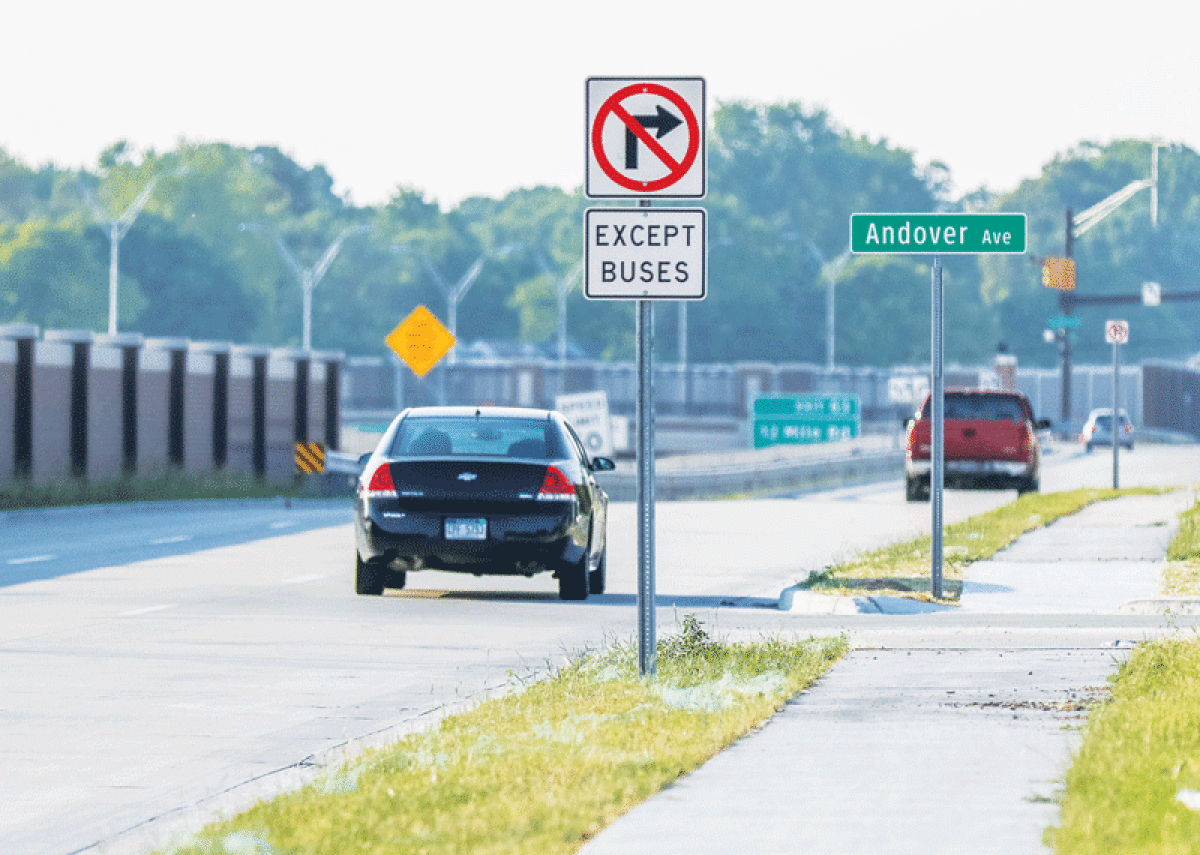MADISON HEIGHTS/ROYAL OAK — Road construction on Interstate 75 and its northbound service drive has led to more drivers cutting through the neighborhood north of Lincoln Avenue and south of 11 Mile Road, as they try to reach John R and 11 Mile roads.
This has led to more traffic violations in the area, from speeding to running stop signs.
The Michigan Department of Transportation placed “no right turn” signs at each entry point to the subdivision to try and mitigate the issue. But the signs are placed on the service drive’s east side, just prior to each entry point, and that area is within the city limits of Royal Oak, where police from Madison Heights have no jurisdiction.
Now, to address traffic laws at their border, the cities of Madison Heights and Royal Oak have reached an interlocal agreement which will give Madison Heights police the authority to enforce traffic violations on the northbound I-75 service drive between Lincoln and Gardenia avenues.
“Not surprisingly, most drivers don’t pay attention to what city they are in when they’re driving. So I think this is just a common-sense solution to a problem that was partially created by all of this expanded construction on I-75,” said Mark Bliss, the mayor pro tem of Madison Heights.
“Had that not happened, we might not have this problem to the degree where this is needed,” he said. “But I’m incredibly thankful to our police chief and city staff for coming up with this solution and working with our neighbors to ensure there’s safety across our borders.”
Corey Haines, the police chief of Madison Heights who retires at the end of the month, said via email that the arrangement is focused on vehicles turning into the subdivision and then speeding past stop signs.
“All of the streets off the service drive are posted as no right turns,” Haines said. “The issue is that this portion of the service drive is within the jurisdiction of Royal Oak.”
Lt. Al Carter, with the Royal Oak Police, described the deal as a practical approach.
“And the agreement can be indefinite, or it can also be terminated at any notice when it’s no longer needed,” Carter said. “It’s just merely assisting, from one police department to another … trying to work the way around the whole little bit of a hiccup with the I-75 construction.”
He added that he would like it if “everyone can just be patient for the time being, and be respectful of all the neighbors in the jurisdictions,” and noted that the traffic “affects both Royal Oak and Madison Heights — but primarily Madison Heights right now.”
Roslyn Grafstein, the mayor of Madison Heights, said the speeding is a real problem.
“With all the construction in the city, we’ve been receiving numerous complaints about fast and unsafe driving on Gardenia and nearby streets,” Grafstein said via email. “To avoid construction, drivers are just tearing down side streets, with no regard for children or others who may be crossing the road. Teaming up with Royal Oak in this interlocal agreement allows officers from both cities to enforce traffic violations in this area, and hopefully deter speeders and other reckless drivers here.”
Sean Fleming, a member of the Madison Heights City Council, said he appreciates the two cities working together.
“As a commuter who frequents the area, personally, I’ve witnessed some traffic offenders who have driven down streets marked ‘Do Not Enter,’ and nearly caused mayhem doing so,” Fleming said. “This new arrangement will help both the commuters in the area and the neighbors who live nearby, eliminating potential safety hazards.”
Bliss said he doesn’t take such arrangements for granted.
“I believe any resident learning about this will wonder why it wasn’t done earlier, since it just makes sense, but I think that undersells the complexity of reaching interlocal agreements like this,” Bliss said. “It’s not always easy to do, getting both police departments and city managers and staffs and councils on board. It’s no small feat, so many congratulations are in order here for enacting it. The only impact to our law-abiding residents is going to be safer streets, because now we’ll be able to ticket those motorists who speed through our subdivisions.”
C & G Staff Writer Michael Koury contributed to this story.
 Publication select ▼
Publication select ▼






















